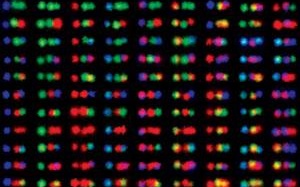WOBURN, Mass.—A chemical expert and a DNA analyst were called to the stand yesterday as the final witnesses in the trial of Jabrai Jordan Copney—the alleged shooter in the May 2009 slaying of Cambridge resident Justin Cosby that took place in Kirkland House.
The prosecution concluded its case after presenting evidence that showed gunshot residue on Copney’s jacket as well as DNA analysis from artifacts of the crime scene.
Some of the DNA evidence taken from three parts of the gun partially matched Copney’s DNA, according to the witness.
Per protocol, the forensic DNA analyst testified that she had mixed the three swabs from the gun’s slide, grip, and trigger before performing tests to compile a sufficiently large DNA sample.
As a result, the analyst had not tested the DNA from only the trigger for this investigation—a point the defense raised during cross-examination.
After Assistant District Attorney Daniel J. Bennett ’85 announced the conclusion of evidence from the prosecution’s side, defense attorney John A. Amabile said that the defense had no evidence to present.
In his opening statement on April 6, Bennett said that the Commonwealth of Massachusetts was prosecuting Copney for first degree murder on the grounds that he helped plan the armed robbery of Cosby’s marijuana and fired the shot that killed him.
Amabile countered that the killing was a product of a failed drug deal, and that co-defendant Blayn Jiggetts was in fact the shooter.
During the past two weeks of presentation of evidence, several examiners, analysts, and police officers were called to the stand to verify physical evidence and police proceedings related to the crime.
Key testimonies from former Harvard senior and Kirkland resident Chanequa N. Campbell, Yale graduate and former drug dealer Jules E. Bolton, and Jiggetts painted a narrative surrounding Copney’s case.
Associate Justice John T. Lu dismissed the jury for the day in order to converse with the attorneys on the wording of the instructions Lu would deliver to the jury on Wednesday.
During court proceedings outside the jury’s hearing in the afternoon, the three parties finalized the instructions that Lu would deliver before the jury is released to deliberate on the case.
The attorneys considered, for instance, whether a photo of Cosby would be admitted into evidence for the jury to examine—though Lu did not come to a conclusion during the session.
Less than a month from the two-year anniversary of the shooting, today marks the presentation of closing statements from both sides.
—Hana N. Rouse contributed to the reporting for this story.
—Staff writer Xi Yu can be reached at xyu@college.harvard.edu.
Read more in News
Hauser Slated to Return to Harvard in the FallRecommended Articles
-
Harvard Study Opens New Front in Cancer ResearchHarvard researchers have created a molecule that can block an important element of the on-off switch in cancer genes, potentially opening a new front in cancer research.
-
Harvard-MIT Study Examines GrapheneGraphene—a one-atom-thick carbon complex—could be the key to a faster and cheaper method for sequencing DNA, according to a study published by Harvard and MIT researchers that was featured as the cover story in a recent issue of the journal Nature.
-
Class Spurs Interest In ResearchAlly M. Freedy ’14 came to Harvard leaning heavily towards becoming a Neurobiology concentrator. At the beginning of freshman spring, she sought out research opportunities and secured a position in the lab of molecular and cellular biology professor Takaoa K. Hensch ’88, studying brain development.
-
Karthinking About PartyingThis week—with my last column ever—I’d like to Karthink about my morally hazardous justification for the benefit of my similarly hesitant peers: Partying all May will make you live longer.
-
 Crimes at Harvard and Wartime House Life
Crimes at Harvard and Wartime House Life -
 Scientists Develop DNA Barcoding
Scientists Develop DNA Barcoding













